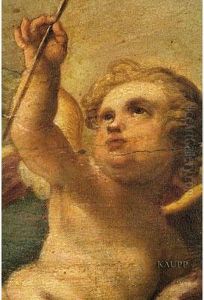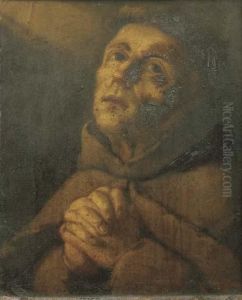Lorenzo Cardi Paintings
Lorenzo Cardi, also known as Cigoli, was an Italian painter and architect who was born in 1560 in Castello, near Florence. He was a leading figure of the late Mannerist and early Baroque periods. Cigoli's real name was Ludovico Cardi, but he is commonly referred to by his place of birth, Cigoli, a common practice at the time.
Cigoli was a student of Alessandro Allori, but his style was also heavily influenced by the work of Santi di Tito, and later, Barocci, Correggio, and Caravaggio. These influences are evident in the shift in his painting style from the Mannerist to the Baroque, with a greater emphasis on realism and emotion.
He was a contemporary of Galileo Galilei, with whom he maintained a correspondence. This association with Galileo is significant in the context of the Counter-Reformation, as his work often tried to reconcile the new scientific discoveries with the teachings of the Catholic Church. Cigoli's painting of the Immaculate Conception for the church of Santa Maria Maggiore in Rome is particularly notable for incorporating a moon that is not idealized, as was common at the time, but depicted with craters and imperfections as Galileo had observed it through his telescope.
Cigoli enjoyed considerable success during his lifetime and was patronized by several prominent figures, including the Medici family in Florence. His works include a range of religious and mythological themes, and he was also an accomplished portraitist. As an architect, Cigoli designed the chapel of the Stigmata in the Roman church of Santa Maria delle Stimmate and was involved in various projects in Florence and its surroundings.
Lorenzo Cigoli died on June 18, 1605, in Rome. His influence continued after his death, as his works were significant in the development of Baroque artistic expression in Italy. His legacy is visible in the works of later artists who were inspired by his approach to painting, especially in his use of color, light, and emotional expressiveness.

